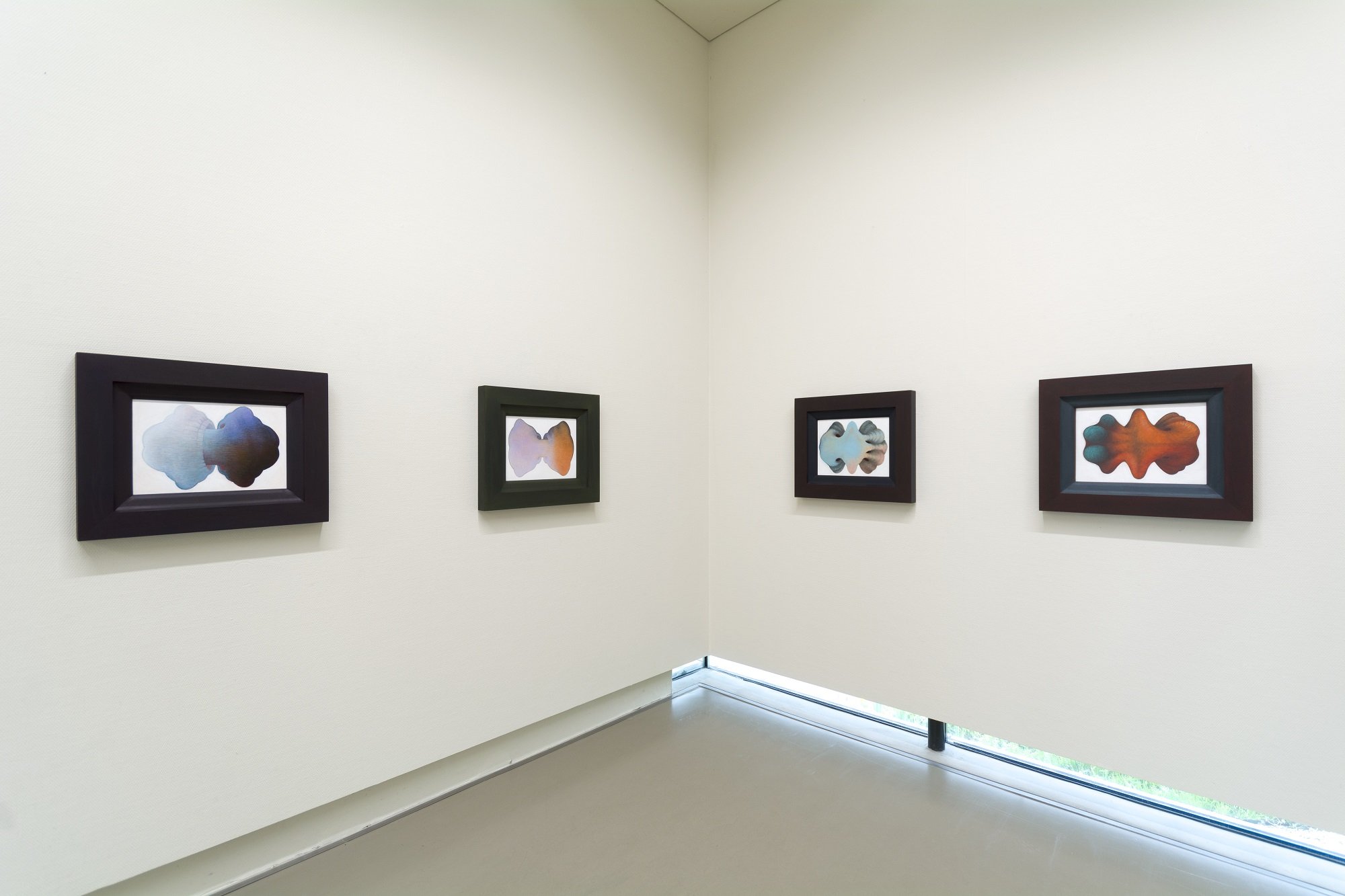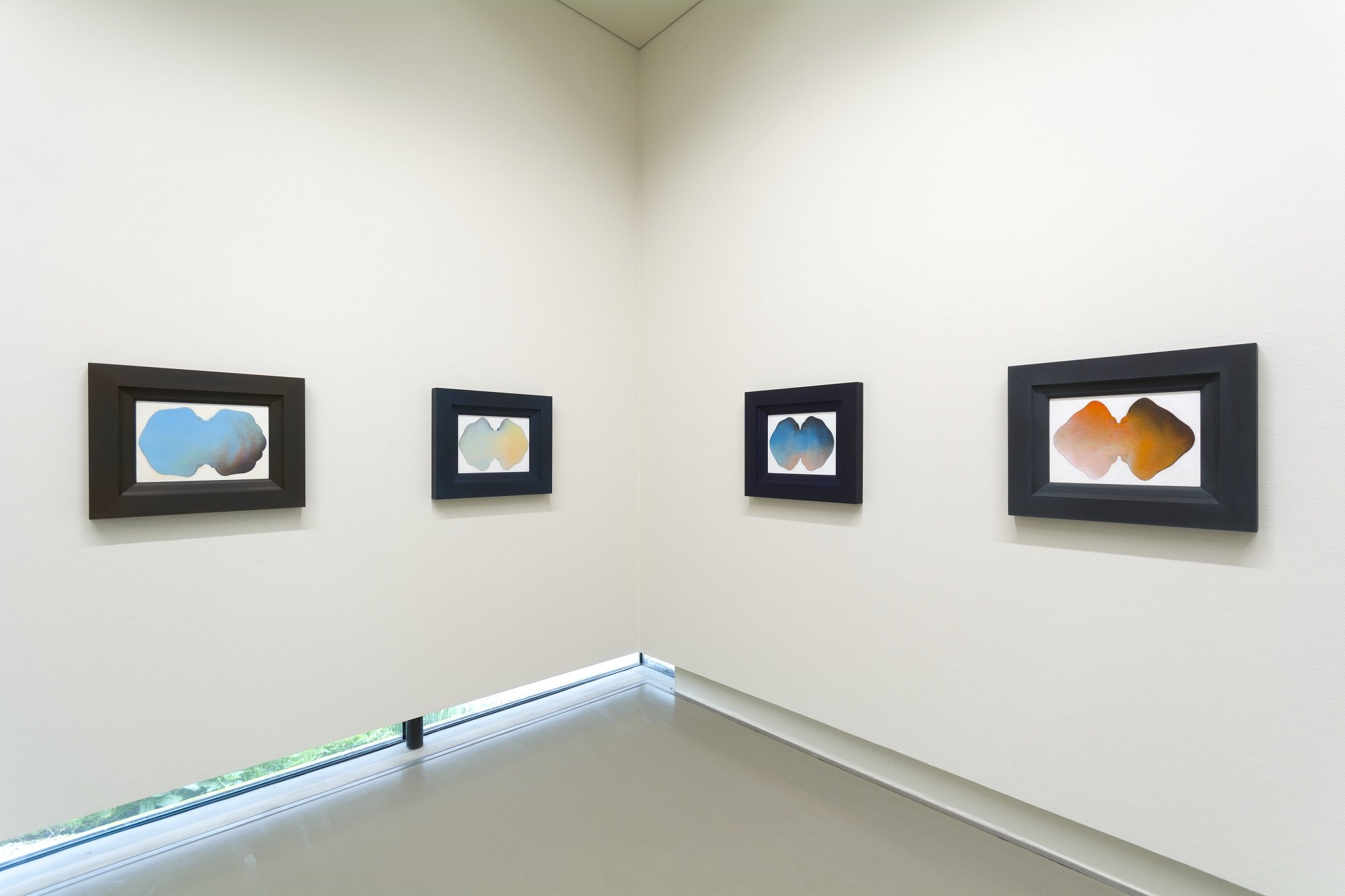EXHIBITION SUMMER 2024

11 small solo exhibitions by 11 pictorial storytellers
June 22 – September 22
In the summer of 2024 Museum Belvédère will exhibit work by eleven diverse Dutch artists who record personal experiences and recollections in series of drawings or paintings.
In all the participating artists’ works images are simplified to concise, illustrative –sometimes cartoonesque – pictures. In many cases their essence is alienating, conveying the enchantment of a wondrous dream world. The eleven artists whose work is shown in the exhibition Verhaald – Verbeeld (Stories – Images) compose their pictures on the basis of associations, found mainly in memories from youth, dreams and experiences.
The works range from painting, collage/mixed-media to drawing. For the exhibition a selection was made from older and recent work. Mirjam van Houten made a completely new series of stories in drawing.
The exhibition Verhaald – Verbeeld consists of 11 small solo exhibitions by 11 pictorial storytellers:
Alexandrine (1903-1980),
Barend Blankert (1941-2023),
Frank Creton (1941),
Diederik Gerlach (1956),
Pieter Hermanides (1932-2019),
Mirjam van Houten (1977),
Jantien Jongsma (1965),
Erik Mattijssen (1957),
Marcel Reijerman (1958),
Michael van Rijckevorsel (1954),
Hollie Witteveen (1948).
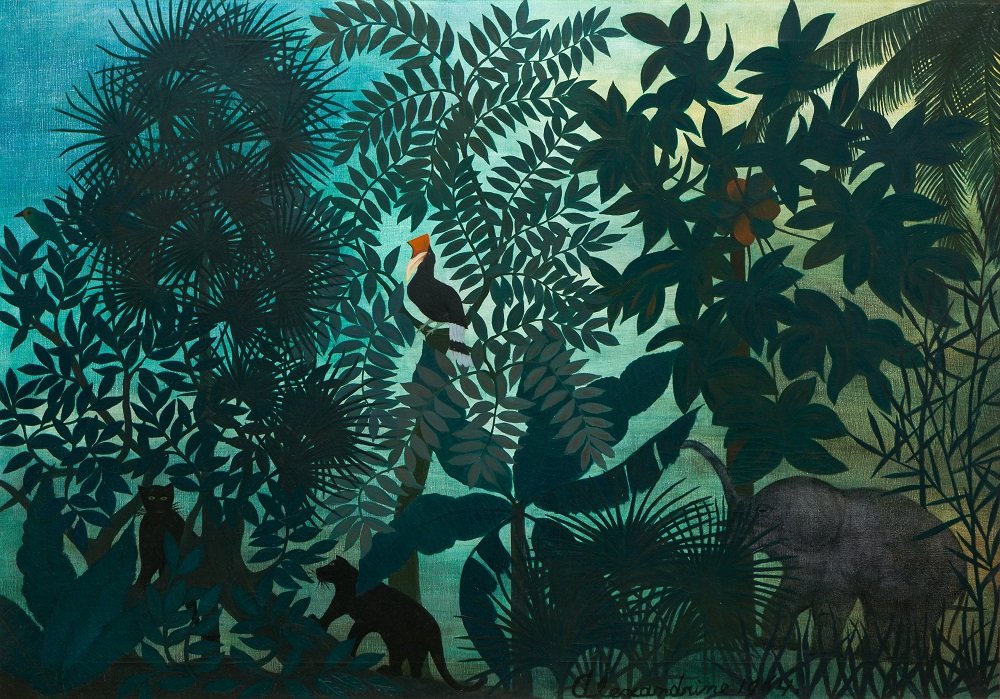
Alexandrine
Alexandrine Kelder-Gortmans (Djokjakarta (Nederlands-Indië), 1903 – Den Haag, 1980) was married to artist Toon Kelder (1894-1973), whose favourite model she was for years. She made her first paintings in 1960 during a visit to Vence in southern France, where the subtropical nature reminded her of her birthplace. Her dreamy landscapes and town scenes are characterized by a palette of warm colours and simplified forms, which refer to Henri Rousseau’s work.
Alexandrine always signed with her first name and used different techniques, pencil, pastel, gouache and oil on board and canvas. Her work became especially popular in France in the sixties. After her husband’s death in 1973 she gives up painting altogether.
Barend Blankert
Barend Blankert (Kampen, 1941 – Amsterdam, 2023) was one of the most important Dutch figurative painters of his generation. The exhibition Verhaald – Verbeeld shows a selection of his early work from the frst years of his artistic life – figurative ink paintings on paper with a slightly cartoonesque touch.
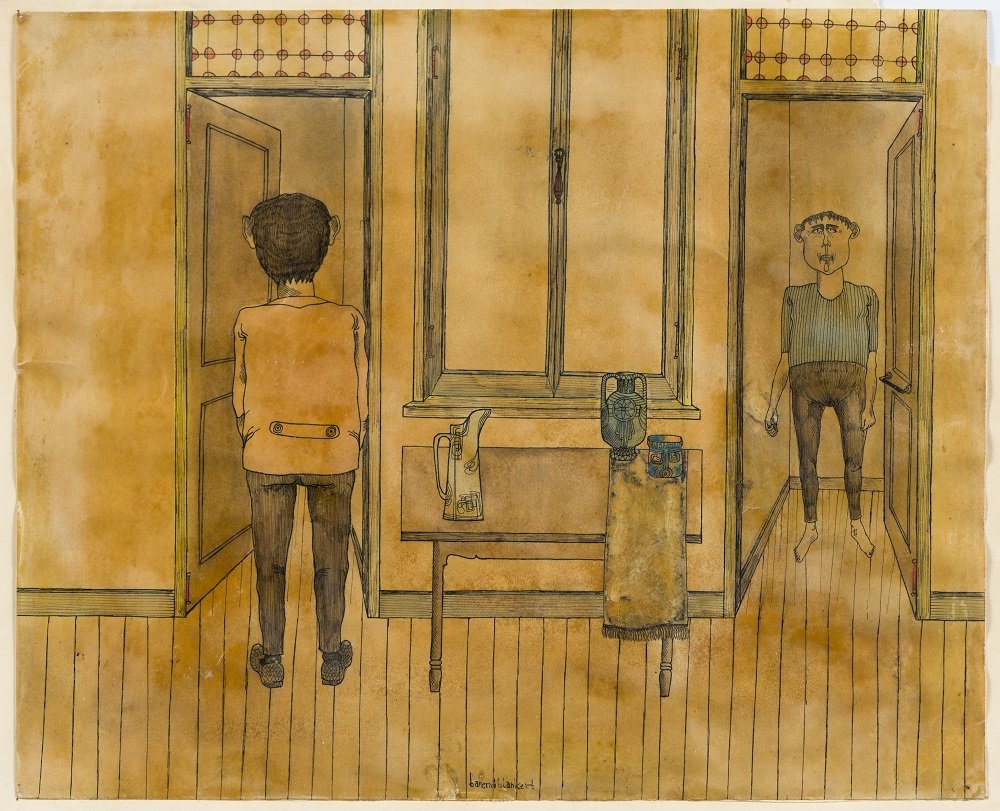
Most of Blankert’s paintings show one or a few characters who find themselves in strange surroundings or awkward situations, which they cannot come to grips with, it seems.
The peaceful atmospheres they are placed in are often full of estrangement and melancholy.

Frank Creton
Frank Creton (Nickerie, Suriname, 1941) grew up in the district of Coronie, a rural environment in Suriname, and came to the Netherlands in 1962. Since then Creton has been using all kinds of memories of Suriname and the history of a country that was subdued by a colonial power for ages.
Verhaald – Verbeeld shows a variety of his work, with the culture of his motherland as a subject. His work is characterized by powerful colours and expressionistic styling.

Diederik Gerlach
In his paintings and gouaches Diederik Gerlach (Den Haag, 1956) regularly refers to the past. His sources are not only his archives of collected images (photographs, drawings, cuttings from travel magazines and advertising leaflets) which fit in with his personal memories, but also art history, especially the German Romantic period.
In Gerlach’s paintings and works on paper German landscapes and towns are the background of alienating images, painted in subdued colours and full of melancholy and, incidentally, a slight discomfort.

Pieter Hermanides
The watercolours and ecoline pen drawings by Pieter Hermanides (Amsterdam, 1932-2019) are related to cartoon art, with distinct lines, frames and lay-out. The scenes he presents are strangely narrative, surrealistic and slightly humorous. The characters in his settings often seem entangled in alienating situations.
Hermanides became especially known for his illustrations for magazines like Avenue and Vrij Nederland and was also the co-compiler and editor of De Kunstliefhebber (The Art Lover).

Mirjam van Houten
Mirjam van Houten (Beetsterzwaag, 1977) is one of the most talented and successful illustrators of the northern Netherlands. She illustrated and wrote numerous (Frisian) children’s books, among which the eulogized By Beppe útfanhûs.
Van Houten employs a colourful, detailed style of drawing and mostly works out her stories in series.
Exclusively for the exhibition Verhaald – Verbeeld she made a new pictorial story with a museum visit as a subject.

Jantien Jongsma
Jantien Jongsma (Harlingen, 1965), graduated from the Gerrit Rietveld Academie, grew to be a master storyteller. In her work she combines present and past in complicated picture puzzles, creating new worlds full of amazement, wandering thoughts and feelings. In her new worlds she mixes personal memories and everyday observations with fantasy.
In her work Jongsma often combines different techniques varying from acryl paint, watercolour, pencil to collage. Her imagery is strongly inspired by folk art, especially woman made embroidery.

Erik Mattijssen
Erik Mattijssen (Veenendaal, 1957) paints in an intuitive collage-like manner, from picture archives he assembled over the years. He has folders filled with pictures of flowers, toys, cutting patterns and the food cans his shopkeeping father used to sell. Experiences from his many travels abroad also land in his work, with, as a special item, a Parisian grocery, the inspiration for Izrael, l'épicerie du Monde.
He theatrically creates interiors without people, with objects as the main characters – life stories, thoughts and memories are told with props in his tableaux vivants. Mattijssen’s favourite tools are pencil, gouache and pastel chalk, and his work is characterized by vivid colours, playful combinations and piled up motifs.
Marcel Reijerman
Marcel Reijerman (Arnhem, 1958) took courses at the Academie voor Beeldende Kunsten in Arnhem. He prefers to work with pencil, charcoal and pastel. Reijerman’s drawings are fed by continuous associations.
While working he shifts accents, motives flow from one to another and stories are depicted without a beginning or an end.

In his larger panoramic landscapes he often includes changing perspectives, zooming in and out of multiple scenes of a story. Medieval miniatures and paintings are an important source of inspiration.
In his work Reijerman combines elements from reality with dreams, fantasy and hallucinations.


Hollie Witteveen
In his large acryl paintings on canvas Hollie Witteveen (Leeuwarden, 1948) uses a strictly schematic style of drawing, referring to children’s drawings, with early memories as a source.
In his pictorial stories Witteveen includes toy motives and refers to the American film heroes and comic strips that shaped his life as a boy. Witteveen employs bold strokes, in which every seeming imperfection acquires a meaning in the eventual image.
His painted stories often have a cartoonesque, humorous vein, but are at the same time impregnated with nostalgia.

Michael van Rijckevorsel
In the seclusion of his dwelling on the Hogeland of Groningen Michael van Rijckevorsel (1954) has built up an obstinate oeuvre of drawings. Museum Belvédère shows a selection from his pastels, series in which the artist often depicts varying personal memories and dreams, to which he occasionally adds a written commentary.
In his cartoonesque drawings the artist displays a great sense of details and light-shadow effects.
Michael van Rijckevorsel is self-educated, and in Verhaald – Verbeeld he comes out into the open for the first time.

ROOMPRESENTATION
22 June – 22 September 2024
In the summer of 2024 the Dutch sculptor Herbert Nouwens (1954) will show nine monumental sculptures in the Museum park of Museum Belvédère, under the name of Belvédère Suite, in analogy with the musical term. Six sculptures were selected from different periods of Nouwens’ sizeable oeuvre and three were made especially for this exhibition. In addition the west wing of the museum shows a chamber presentation with smaller work he made.
Themes like ‘movement and tranquility, ‘mortality’ and ‘life and death’ are central in Nouwens’ oeuvre. The constructive and destructive forces in our world inspired him to make his new sculptures for Belvédère Suite.
The title of the exhibition refers to the multi-part dance compositions of the Baroque, in which different dances were ordered to contrast with each other. Because the different parts of a suite are in the same key they still form a unity.
In the selection and arrangement of the nine sculpures in the Museum park the artist aims at a similar interplay between the sculptures themselves, and with the rigid symmetrical design of the park landscape.
Nouwens is known for his often large and capricious structures of used materials – mainly steel – that show traces of an earlier life.



His preference for steel has to do wih the wide plastic and constructive possibilities of the material. This results in sculptures with extreme contrasts, seeming weightlessness, or large volumes that can be very transparent.
Steel also fits in with his associative way of working. Nouwens translates his impressions and vision of the world in forms that grow through his cutting, distorting, forging and assembling steel.
In this translation Nouwens follows the tradition of post-war sculpturing, developing a completely personal form language.
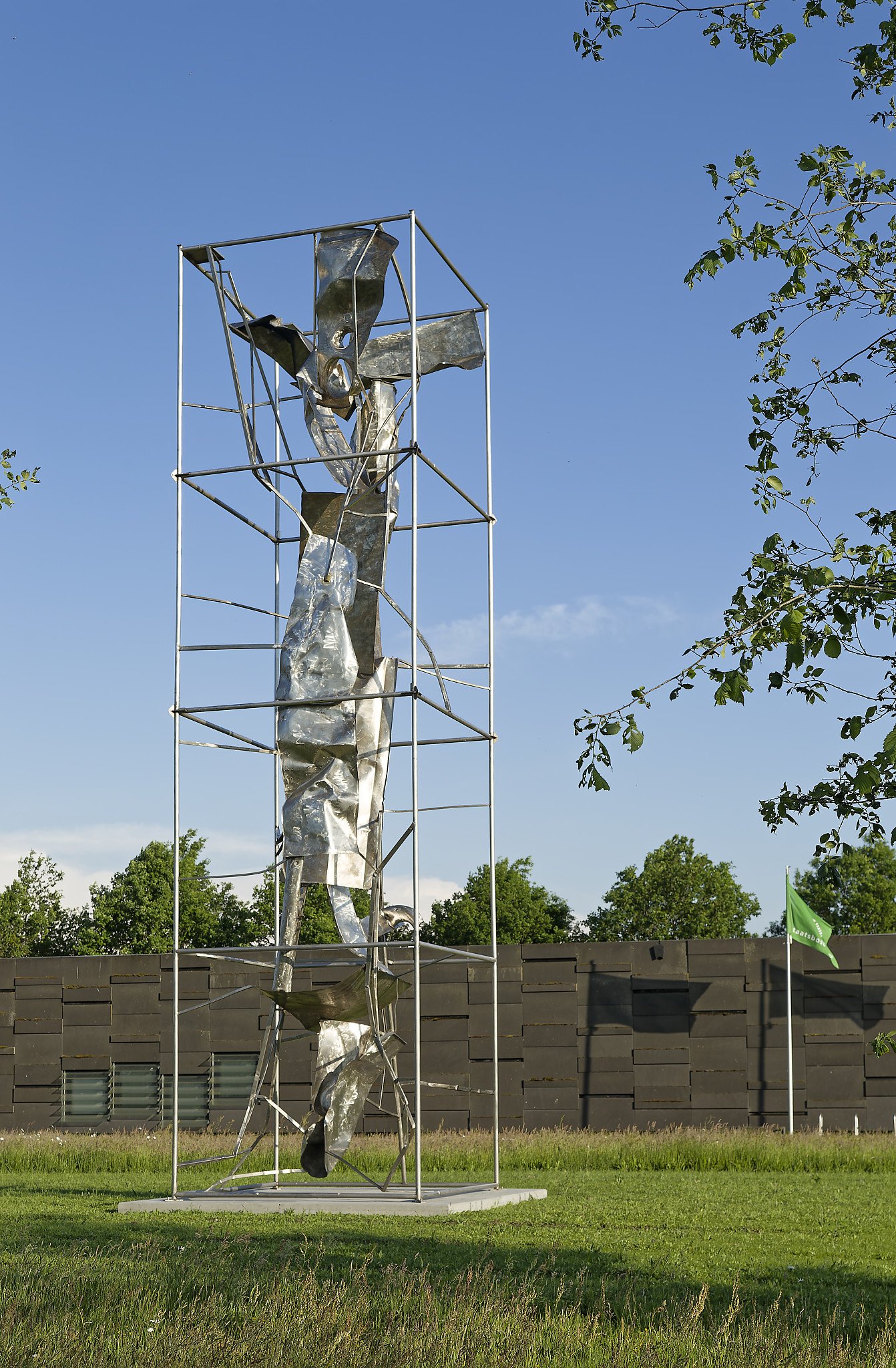
His works of art can be found in numerous places in the Netherlands, such as Fuga at the entry of IJmuiden, a seventeen metres high open construction, or The Gate of Bergen, two eight metres high closed towers, at the entry to the artists’ village in Noord-Holland. In Amsterdam twenty sculptures, named Brettensuite, are permanently placed alongside a walking and cycling track in the Westerpark and the adjoining nature area de Bretten.
Nouwens was educated at the Stadsacademie in Maastricht, concluding it in 1977 by winning the Henriëtte Hustinkx Prize. He continued his studies with a postacademic course at the Jan van Eyck Academie, also in Maastricht.
Roompresentation Zoltin Peeter pricewinner Hans Hoekstra
winner Zoltin Peeter prize
June 11 to September 22, 2024
Hans Hoekstra (1983) is a Frisian native who currently lives and works in Groningen. As a draftsman and painter, Hoekstra has been working tirelessly on his oeuvre for years. He especially has an eye for the mundane, unemphatic, insignificant and inconspicuous. A plant on the windowsill, a street with cyclists, the backyard, the neighbors' roofs, people sitting in the living room can easily be the reason for a drawing or painting. By taking them as subjects, Hoekstra lifts them from the stream of anonymous oblivion.
ZP Fund Foundation
Shortly before his death, visual artist Zoltin Peeter (1942-2019) founded the ZP Fund Foundation, with the aim of periodically awarding a cash prize from its assets to a visual artist. The jury does not use a specific starting point, biased idea or ideology, but selects based on visual quality. The prize is preferably awarded as a bolt from the blue.




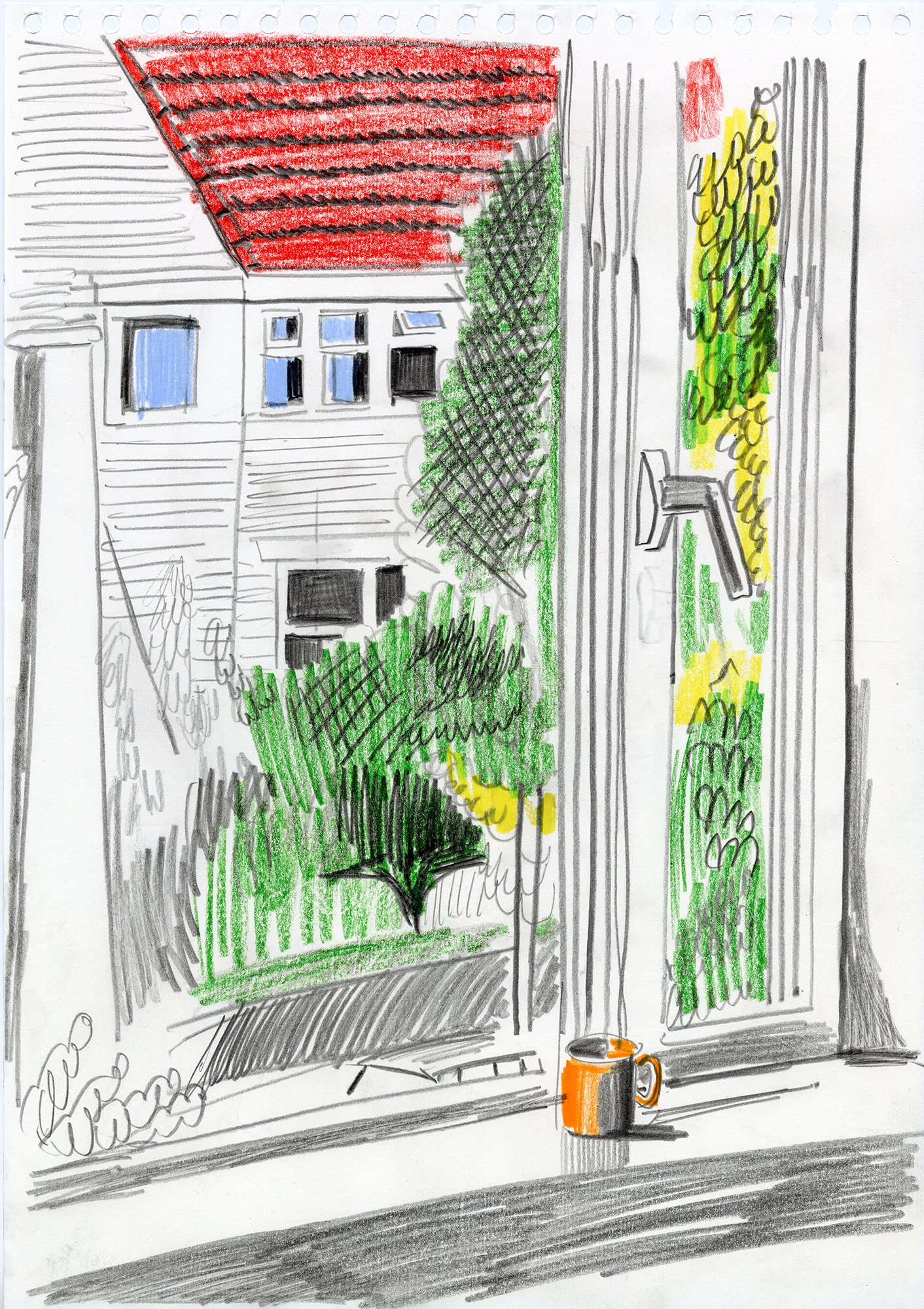
EXHIBITION HISTORY: ROOM PRESENTATIONS

February 24 - June 2, 2024
In the westwing, Museum Belvédère presents a room exhibition with work by artist Djurre Pieter Duursma (Amsterdam, 1888 – The Hague, 1965). Duursma was born in Amsterdam as the son of Frisian parents. After taking drawing lessons in Antwerp, he established himself as a visual artist in his hometown.
Initially, Duursma painted in an impressionistic and moderate expressionistic style. When he came into contact with Theo van Doesburg and Erich Wichmann in the second decade of the twentieth century, his work became more colorful and abstract.

The works he created in the period 1916-1926 are among the highlights of his oeuvre and form the core of the room exhibition in Museum Belvédère.
During the 1920s, Duursma increasingly focused on designing stained glass windows and furniture.

This presentation of Djurre Duursma's work is a follow-up to the exhibition that took place in 2022 in the Noord-Veluws Museum in Nunspeet.
It includes various works that subsequently surfaced and are shown for the first time in Museum Belvédère.

February 23 - June 2, 2024
Harjo Neutkens (Vessem, 1967) has worked for years in relative isolation on a very personal oeuvre that lies somewhere between figuration and abstraction. In his work Neutkens tries to touch on the structures that underlie all appearances.
His painted and drawn images immediately evoke associations with microstructures or dizzying macrostructures. Like molecular or cosmic constellations, they appear to move freely in space, with shapes sometimes flowing together and then apart.
Neutkens builds his mysterious image structures layer upon layer with great care and endless patience, until an ultimate harmony is achieved between form, structure and color.
His room exhibition in Museum Belvédère is the result of years of work in relative silence and his first presentation in a long time.

